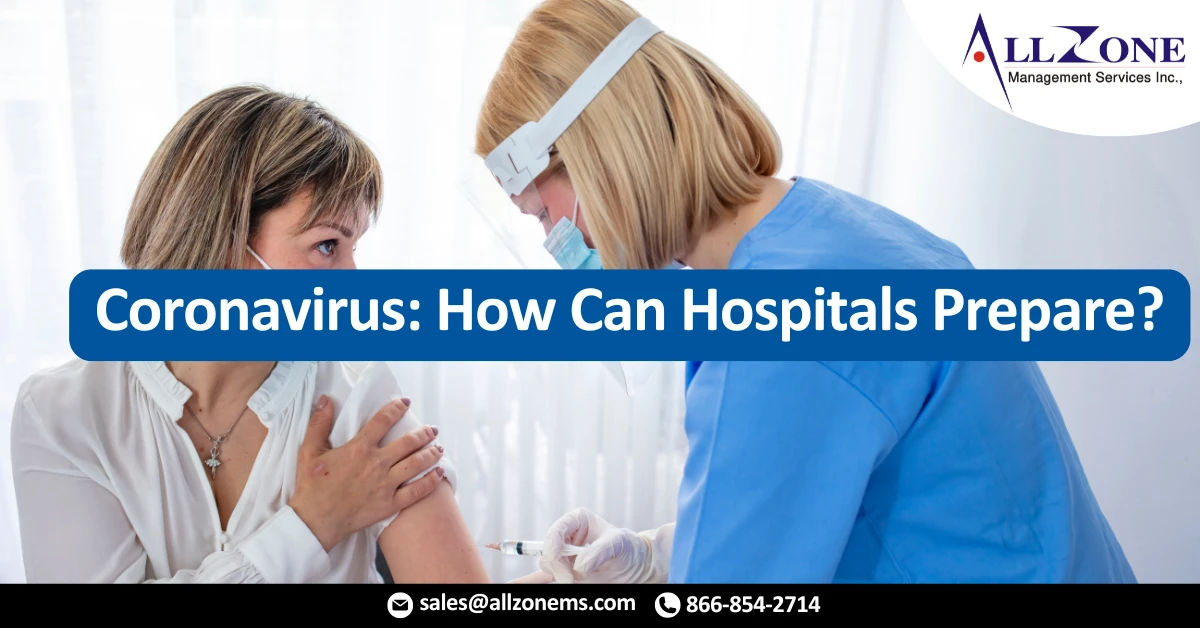Last week, the coronavirus that originated in the Chinese city Wuhan continued to spread. The World Health Organization declared a global emergency, and the first case of person-to-person virus transmission was recorded in the United States. The coronavirus outbreak is reminiscent of other viral outbreaks in recent memory, including Ebola in 2014, and SARS in 2003.
When viral outbreaks reach this level of attention, the general public naturally wonders how healthcare providers are preparing in case patients present at their facilities. Even though coronavirus coverage in the media may be sensationalistic and it is difficult to tell what the impact of this outbreak will be, it is useful for healthcare leaders to review their communicable disease protocols and be able to reassure the public that their organizations are prepared.
In 2014, HBI published an article on what steps providers could take during the Ebola outbreak, from which the following is adapted (click here for HBI members). Many of our recommendations still apply in the case of the coronavirus. In particular, the coronavirus presents an opportunity for healthcare leaders to educate the public—and reeducate employees—about internal policies related to infectious diseases.
Patient Screening
Early identification of infectious diseases such as coronavirus is critical to containment. The symptoms of coronavirus are like the flu, and include fever, coughing, and shortness of breath. When patients present with these symptoms, nurses may ask them if they have traveled outside the U.S. to a part of the world where coronavirus has occurred, or if they have had contact with anyone who has. For maximum protection, healthcare workers who conduct screenings may wear a fitted N-95 mask, goggles, gown, and gloves.
Organizations do not typically undertake the above screening protocols for all patients unless specific communicable diseases have been identified in the area. Even so, leaders may find value in analyzing their organizations’ preparedness to initiate screening in the event of a local infectious disease occurrence. The availability of personal protective equipment is a key consideration. Other resources that may be necessary include: signage directing suspected communicable disease patients to the ED; tables and chairs to screen a large volume of patients; and extra antimicrobial soap and alcohol hand rub dispensers.
Standard and Transmission-Based Infection Precautions
One of the most comprehensive resources on controlling communicable diseases remains the “2007 Guideline for Isolation Precautions: Preventing Transmission of Infectious Agents in Healthcare Settings” by Dr. Jane D. Siegel and her colleagues at the CDC’s Healthcare Infection Control Practices Advisory Committee (HICPAC). This resource is available on the CDC website here and includes several recommendations supported by evidence for managing infectious diseases. Healthcare leaders may wish to consider using the 2007 Guideline as a vehicle for education.
For coronavirus, the CDC recommends that organizations review infection control policies and the ability to implement standard, contact, and airborne precautions if necessary. Below are the key components of each category of precaution.
Standard Precautions: These practices apply to all patients. As a minimum level of protection, the importance of careful hand hygiene can hardly be understated. The current attention on coronavirus provides leaders with the opportunity to reemphasize the need to follow hygiene policies. Personal protective equipment reduces the spread of infectious disease. Other important elements of standard precautions are:
- Disinfection of patient care environments, clinical equipment, and any relevant public areas.
- Safe injection practices that include using alcohol on IV caps/ports, single-use needles and syringes, and single-dose vials when possible.
- Cough etiquette by staff, which may be bolstered by signage in public areas and the availability of masks for patients.
Contact Precautions: These practices minimize the touching of infected patients or anything in their environments. Ideally these patients must be placed in single-patient rooms with private bathrooms. The hallway door must be closed with a sign outside to alert staff and visitors that extra safeguards are necessary, including:
- All staff or visitors must put on gloves and gowns before entering the room.
- Gloves and gowns shall be discarded and hand hygiene practiced before leaving the patient’s room.
- Patients must wear clean gowns and complete hand hygiene before being transported to other parts of the facility for tests or procedures.
Airborne Precautions: Patients need to be placed in an isolation room with special ventilation. If an isolation room is not available, patients may be placed in a private room with the door closed and given a mask. Anyone caring for the patient should also wear a mask in addition to other personal protective equipment before entering the patient room.
Review of Communicable Disease Established Workflow
Even if a serious communicable disease is unlikely to occur, it can be useful for organizations to review established procedures for managing such an event. Some critical questions worthy of provider consideration are:
- How will patient and staff movement be changed/restricted?
- How can details of appropriate lab testing be effectively communicated—including specimen type, where to submit specimens, and supplies needed?
- How will staff on exposed units be notified about treatment, work restrictions, and steps they need to take?
- How and by whom will communications to patients and the general public be created and distributed?
- What channels will be used for both internal and external communications?
If personnel can conduct preparedness drills while the risk of communicable disease is still low, providers can identify gaps in their ability to answer these and other questions that may arise. It may also be useful to verify that necessary supplies would be available if a serious event were to occur. By reviewing readiness now, leaders can be sure they are doing everything possible to protect their patients and communities.
For More Information: https://www.healthcarebusinessinsights.com/blog/cost-quality/coronavirus-can-hospitals-prepare/

